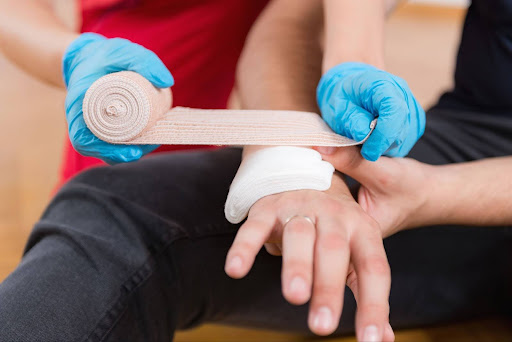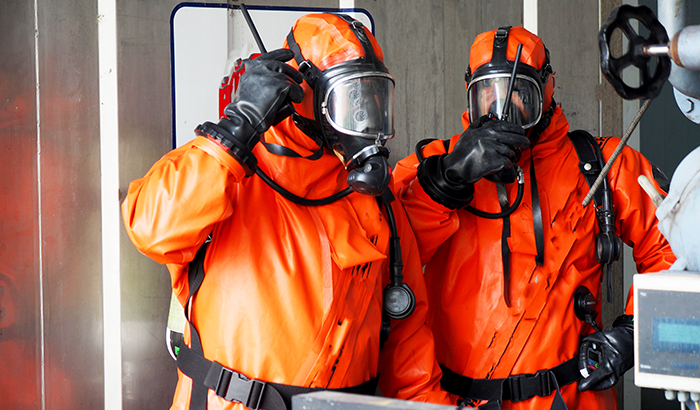Homeowners need to prioritize emergency response planning to effectively protect their homes and loved ones in the event of unexpected disasters. Being prepared can make a significant difference between managing disruptions and experiencing significant losses.
In this blog, we’ll go over the basics of emergency preparedness, giving you the know-how necessary for preparing an emergency kit, creating a plan, and following safety protocols.
How should individuals be prepared to respond to emergencies?
Preparing to respond to emergencies is essential for individuals to ensure their safety and well-being. By taking proactive steps, individuals equip themselves to effectively handle unexpected situations and potentially minimize the impact of emergencies. Here are some key strategies to consider:
- Create an emergency plan: Develop a comprehensive plan that outlines how you and your family will respond to different emergencies. Identify potential hazards in your area, establish meeting points, and designate responsibilities for each family member.
- Build an emergency kit: Assemble a well-stocked emergency kit with essential supplies such as non-perishable food, water, a flashlight, a first aid kit, and necessary medications. Keep the kit easily accessible and regularly check and replenish the items.
- Stay informed: Be aware of emergencies that could occur in your area. Stay updated on local news, weather forecasts, and emergency alerts. Sign up for community alert systems or download relevant mobile apps to receive real-time information.
- Learn basic first aid and CPR: Enroll in a first aid and CPR training course to acquire essential life-saving skills. Being able to provide immediate medical assistance helps increase the chances of survival during emergencies.
- Practice emergency drills: Regularly conduct emergency drills with your family members or household so everyone knows what to do in specific scenarios. Practice evacuations, sheltering, and other emergency procedures to improve response times and minimize confusion.
- Secure your home: Take proactive measures to safeguard your home against emergencies. Install smoke detectors, fire extinguishers, and carbon monoxide detectors to avoid fires and subsequent fire damage. Ensure your home is properly insulated and reinforced to withstand natural disasters such as hurricanes or earthquakes.
- Maintain important documents: Make copies of essential documents such as identification cards, insurance policies, and medical records. Store these copies in a secure and easily accessible location, or consider keeping digital copies stored securely in the cloud.
- Establish emergency contacts: Maintain a list of important emergency contacts, including local authorities, medical professionals, and utility providers. Share this information with all family members, and keep a copy in your emergency kit.

Emergency plan development
Clearly define and rehearse evacuation routes so that every member of the household understands the protocols.
Within your residence, designate safe areas for sheltering during different types of disasters, and stock these areas with essential supplies — prioritize safety and ease of access for everyone.
Finally, effective communication means establishing an “in-case-of-emergency” contact hierarchy, solidifying a network of support.
Role assignments
In preparing for emergencies, define the roles each person will play in the event of an emergency.
- Coordinator: Oversees emergency plan execution and ensures everyone knows their role.
- Safety officer: Assesses hazards and communicates necessary precautions.
- First aid officer: Manages the medical supplies and administers basic first aid if necessary.
- Communicator: Responsible for contacting emergency services and relaying information.
- Assembly leader: Guides family members to the designated assembly point.
Assign these roles to household members prior to any emergency.
Preparing your emergency kit
Pay a lot of attention to detail when assembling your emergency kit — essentials must be both comprehensive and neatly organized. Prioritize water, non-perishable food items, flashlights, batteries, and a first aid kit in a robust, accessible container. Reflect on every family member’s needs, including pets, to ensure readiness in times of crisis.
In harmonizing with the tenets of preparedness, consider the utility of a lifeline pack. This pack should embody the concept of self-sufficiency for a minimum of 72 hours, encompassing medication, critical documents, emergency contact information, and tools. Reassess and update its contents regularly to maintain its relevance and functionality.
Essentials for survival
In emergency scenarios, your survival may hinge on these essentials:
- Water: Store at least one gallon per person per day for several days for both hydration and sanitation. Pack up portable water filters and iodine packets to take advantage of any water you find.
- Non-perishable food: Gather a supply that will last for at least 72 hours, ensuring it requires minimal to no cooking or refrigeration.
- First aid kit: Include a comprehensive first aid kit to attend to possible injuries, including medications and vital health supplies.
- Flashlights and batteries: Reliable sources of light and the means to power them are indispensable when electricity fails.
- Battery-powered or hand-crank radio: Staying informed through emergency broadcasts can be lifesaving.
- Sanitation and personal hygiene items: Cleanliness prevents illness, a silent threat in disaster scenarios.
- Multipurpose tool: An adaptable tool is useful for various unanticipated challenges.
- Personal documents: Keep copies of important documents easily accessible to aid in recovery and identification.
- Emergency contact information: Have a physical list of emergency contacts in case digital devices are inoperable.
- Warm clothing and blankets: Ensure protection from the elements with appropriate apparel and blankets for warmth.
Special needs consideration
Cater your plan to the specific needs of all household members, including those with disabilities or chronic conditions. Thoughtful preparation is essential to ensure no one is left vulnerable.
Consider medical equipment and prescription medications. Ensure adequate supplies and create a plan for their use during an emergency.
In crafting an inclusive emergency strategy, reflect upon the daily living needs of those with special needs. These may range from dietary restrictions to sensory sensitivities, requiring the provision of specialized foods, comfort objects, or assistive devices that maintain a sense of security and normalcy.
Understanding potential emergencies
When preparing for emergencies, homeowners should consider the specific risks that are likely to occur in their area. For example, if you live in a coastal area, you should be prepared for hurricanes or flooding. This may involve securing your home, having an evacuation plan, and keeping emergency supplies such as non-perishable food, water, and flashlights readily available. In regions prone to earthquakes, homeowners should consider reinforcing their homes’ structures, securing heavy furniture, and having a family emergency communication plan in place.
In addition to natural disasters, homeowners should also be aware of man-made crises that could occur in their area. This may include the risk of fires, gas leaks, or home invasions. Taking steps such as installing smoke detectors, maintaining gas appliances, and implementing security measures helps mitigate these risks.
Preparing for emergencies goes beyond physical preparations. Educate yourself and your family members on emergency procedures. This includes knowing evacuation routes, understanding how to shut off utilities, and learning basic first aid techniques.
Tailor your emergency response plan to your specific risks. This plan should include establishing designated meeting points, identifying emergency contacts, and staying informed about local emergency resources and services. Regularly reviewing and updating your emergency plan keeps you well-prepared to handle any emergency situation that may arise.
Communication and safety skills
In emergency response, proficient communication is the cornerstone of safety. Establish a reliable method of conveying alerts, whether it be through auditory signals, like a whistle, or visual cues, such as a flashing light sequence from a flashlight. Equally important are safety skills; every household member should be trained in the fundamentals of first aid, understand how to use a fire extinguisher, and know how to shut off utilities. These competencies empower each person not only to protect themselves but also to provide assistance to others in moments of urgency.
Establishing contact protocols
When calamity strikes, clarity is your sanctuary. Your family must have a defined protocol for contacting one another and emergency services should the need arise.
In the digital age, cellular phones connect us to assistance and information. Ensure each family member has a list of emergency contact numbers programmed into their devices and a physical copy securely stored.
However, some scenarios, such as power outages, will get in the way of electronic communication. In such cases, have an alternative — a landline or even a satellite phone — and know the locations of nearby emergency centers.
Discuss a communication hierarchy detailing who calls whom in emergencies. This framework should consider the age and location of each member, ensuring they understand their role and whom to contact first.
Lastly, practice these protocols periodically. “Dry runs” ensure the procedures are second nature so everyone knows what to do when the unexpected occurs.

Basic first aid knowledge
Knowing basic first aid is one of the most basic and important parts of emergency preparedness.
In case of minor injuries, understanding how to clean and dress a wound helps prevent infections and any further complications. It’s equally important to recognize when professional medical attention is necessary.
First aid also includes recognizing signs of serious conditions, such as a stroke or heart attack. Quick identification and response can greatly improve outcomes for the affected individual.
Knowing how to perform CPR and the Heimlich maneuver can save a life in asphyxiation or cardiac events. If you don’t already have these skills, take accredited courses to learn them.
Keep a well-stocked first aid kit accessible and ensure all household members are familiar with its contents. Regularly check and replenish supplies to maintain preparedness.
When disaster strikes, call Utah Disaster Clean Up & Restoration
In the event of an emergency, your home may experience damage, especially if the emergency is a natural disaster. When your home needs restoration, call Utah Disaster Clean Up & Restoration. We have over 20 years of experience in home restoration and disaster cleanup.
No matter the damage, trust us to help your house feel like home again. Contact Utah Disaster Clean Up & Restoration today!



